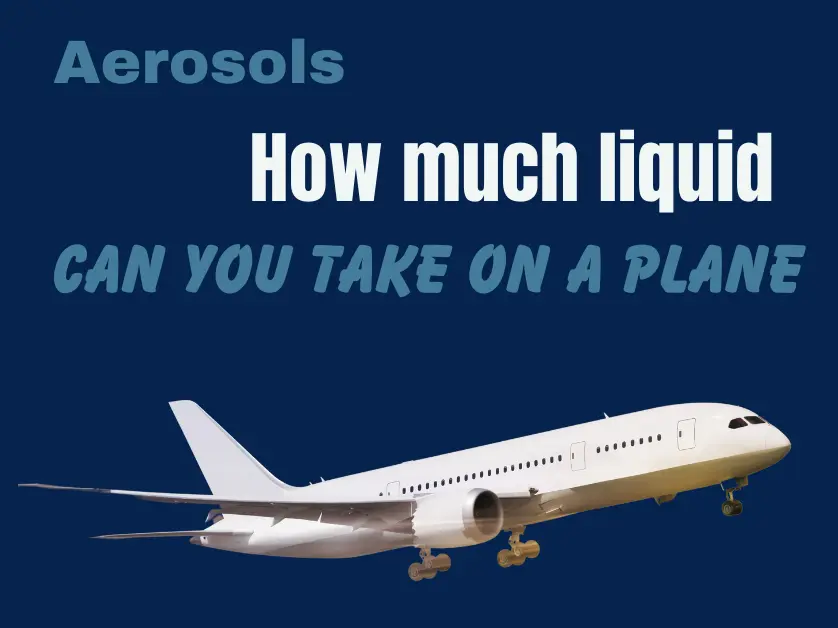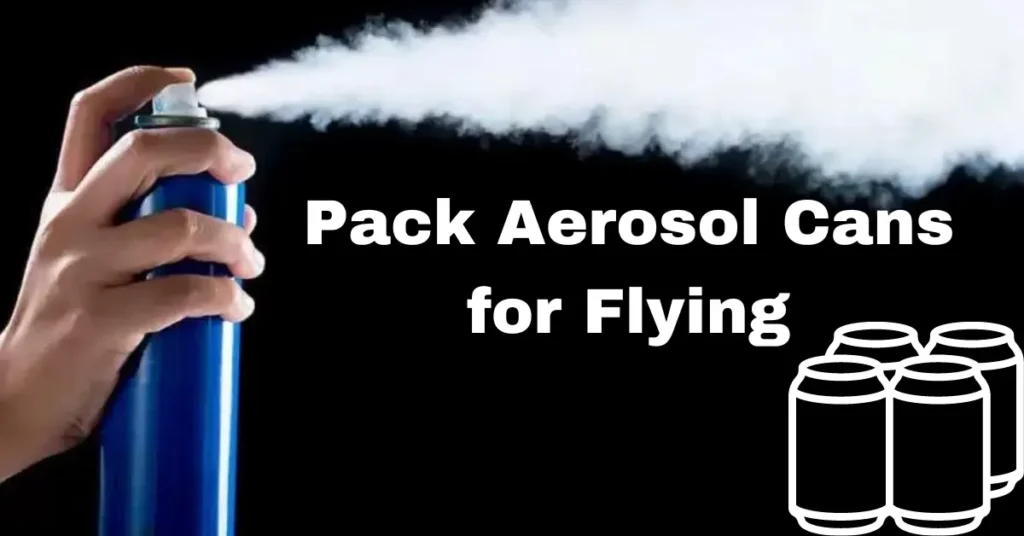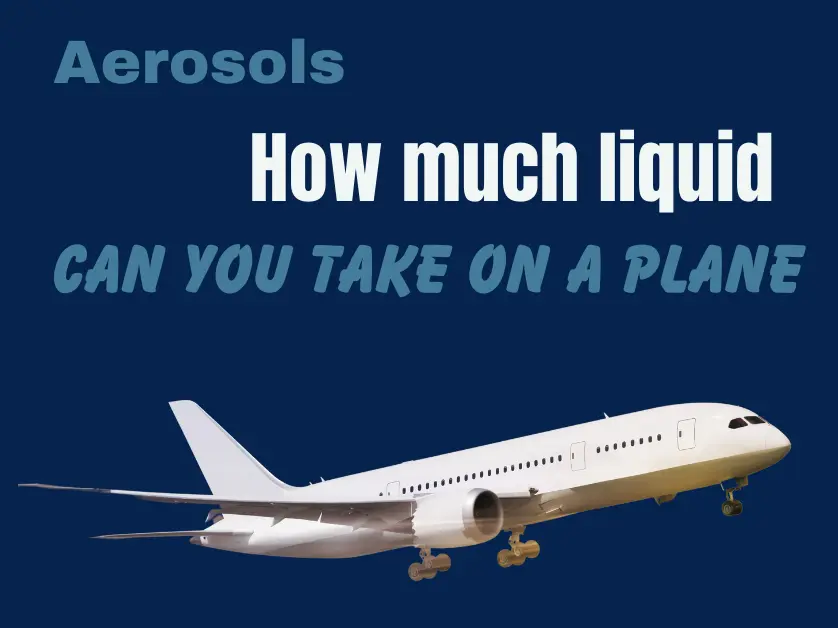Transportation Security Administration (TSA) ensures air travel safety by imposing liquid limits on items carried onto a plane. When passing through airport security screening, travelers must adhere to the set rules and restrictions regarding toiletries, foods, and other items. Understanding and complying with these guidelines is crucial to streamline the security process.

You can bring a vape device on a plane, but it must be carried in your carry-on bag or on your person. Vaping or charging the device onboard is strictly prohibited. It’s pivotal to check the airline’s regulations and the destination country’s laws regarding vaping to ensure compliance.
Table of Contents
How to Pack Aerosol Cans for Flying
For a smoother journey, experienced travelers have discovered a simple solution to the aerosol packing dilemma. By incorporating these tips and tricks into your trip planning, you can confidently pack your favorite hairspray or other aerosol products without the worry of a messy surprise upon arrival at your destination. This valuable knowledge is widely known among seasoned travelers who have mastered the art of packing, making flying with aerosol cans a less unfortunate experience.
A quick warning…
When flying on a vacation, many people wonder, “Can you pack aerosols on a plane?” It’s a common question, especially when considering personal care products like hairspray or deodorant. The answer is yes, you can pack these aerosols in your checked luggage. However, it’s crucial to know that certain types of spray paint or high-pressure cans might be deemed dangerous due to the flammable nature of their contents. To ensure a smooth journey, it’s good to clarify with the airline about specific products and follow their suggestions for packing such items safely.
How to Pack Aerosol Cans for Flying in Your Carry-On Luggage
When flying, it’s crucial to be aware of TSA and their strict liquid rules. The TSA website provides a comprehensive overview of the regulations regarding liquids, including information on aerosol cans. Ensure you check the official TSA website for the latest guidelines before packing any liquids or aerosols.
The “3-1-1” Rule

The 3-1-1 rule is the most pertinent regulation when it comes to carrying liquids, gels, pastes, and aerosols on a plane. If you’re not acquainted with the 3-1-1 rule, it stands for the fact that you can only bring containers of 3.4 ounces or smaller in a quart-sized, clear, resealable plastic bag. This precise size requirement ensures that the aerosols and other products you carry in your carry-on adhere to the strict security standards. Remember, the size of the container matters – anything bigger than 3.4 ounces won’t make it past the security check, and the whole container might have to be left behind.
Why is combining some aerosol cans and flying such a dangerous thing?
The Federal Aviation Administration conducts tests to evaluate potential dangers, like the risk of a lithium-ion battery overheating and causing an explosion. In an everyday packing scenario, something as common as a dry shampoo aerosol can could lead to a massive fire inside the cargo hold. This has prompted concerns and discussions about the possibility of banning certain aerosol products on planes to avoid situations that might bring a plane down. The general worry is that even in seemingly ordinary circumstances, the combination of aerosol cans and other items in luggage can lead to catastrophic outcomes.
What are the Exceptions to the TSA Fluid Limit?
Passengers traveling by air must adhere to TSA guidelines when it comes to packing liquids in their carry-on bags. This includes baby and toddler drinks, as well as food like puree pouches and breast milk. These items are subject to security screening at the checkpoint, ensuring the safety of all passengers on the flight to their destination. The exception made in 2020 for larger quantities of hand sanitizer is not a standard practice but may be revisited in the future.
How to Pack Aerosol Cans for Flying in Your Checked Bags

When planning your trip, get ready for special considerations when it comes to packing aerosol cans. If you have a bigger aerosol can for those inevitable bad hair days, it’s essential to know the rules. Remember to place the aerosol can in your carry-on rather than the checked bag, and be mindful of the liquids bag regulations. This caution ensures a smoother journey from point A to point B without having to ditch your favorite styling product.
Solutions for Leaking Aerosol Cans and Flying
When flying on a plane, ensuring that your carry-on liquids don’t turn into a liquid disaster is crucial. To avoid a messy end to your journey, consider simple precautions. Pack spray deodorant and hairspray in checked bags to reduce the chance of accidental leaks. Use preventatives like taping the lid or placing a plastic bag around the product to act as a safeguard. Place a towel around the cap and secure it with rubber bands for added protection. These solutions help you arrive without any mishaps and keep your luggage mess-free upon arrival.
Are Frozen Liquids Liquid?
It’s essential to understand that the TSA doesn’t make exceptions for frozen liquids in a slushy state. Even if your frozen item is partially melted and transitioning into a liquid, it still falls under the 3-1-1 rule. Therefore, whether it’s a completely frozen item or a thawed liquid in a container, these must comply with the TSA guidelines. Knowing the key phrase “Can you pack aerosols on a plane” is helpful, but it’s equally important to consider the state of the substances, especially frozen liquids, to ensure smooth passage through security without violating any regulations.
Safer Alternatives
Aerosol cans raise concerns when it comes to flying due to the potential danger of exploding in luggage. Travelers should be wary and informed about the scary possibility. It’s crucial to know how to safely pack aerosol cans while traveling. Instead of the traditional aerosol varieties, consider safer alternatives like solid deodorant or pump bottles. Identifying products with a little pressing concern can make your journey worry-free. An informative guide can provide valuable information on substituting spray deodorant or hairspray with less explosive options.
Another Kind of Aerosols
Flying on a plane can be worrisome for those who wonder, can you pack aerosols on a plane? Traditionally, aerosols were packaged with harmful propellants like butane or propane. However, with advancements in technology, the bag-on-valve method provides a safer alternative. This method uses compressed air or nitrogen to pack the liquid product, eliminating the need for traditional propellants. Airlines are increasingly opting for these safer options to ensure a secure and worry-free flying experience.
Now you know all about aerosols cans and flying.
When flying, passengers must consider the regulations for carrying aerosol cans and liquids. In checked bags, it’s generally allowed to pack items like aerosol cans and liquids, but in carry-on bags, there are specific precautions. To prevent leaks, it’s advisable to place these items in a plastic bag or wrap them in a towel. When it comes to personal products, consider using alternatives like solid deodorant or pump bottle hair spray, especially if you’re concerned about the circumstances of air travel affecting these items. Familiarize yourself with the rules based on your destination and explore the available options for transporting such items.
HOW MANY LIQUID OUNCES CAN BE TAKEN ON A PLANE?
When preparing to pack aerosols on a plane, it’s crucial to adhere to airline regulations. Aerosols must be in 3oz bottles or smaller and placed in a clear, resealable bag. Ensure that the containers are properly sealed, and the total liquid ounces inside the bag does not exceed 25. Remember, the liquid ounces limit translates to a secure and hassle-free journey.
THE QUART-SIZED BAG, EXPLAINED
To avoid any inconvenience at the airport, organize your aerosols and liquids thoughtfully. Utilize the provided wiggle room within the quart-size bag dimensions and opt for smaller containers within the 3.4-ounce limit. Larger bags or containers may catch the attention of vigilant TSA agents, leading to potential confiscation. Travel smart by adhering to these guidelines for a hassle-free experience on the plane.
LIQUIDS IN CHECKED LUGGAGE
When packing for a flight, it’s essential to be aware of TSA regulations regarding liquids and other items. While checked baggage tends to have more lenient rules for liquids, certain restrictions still apply. You can pack toiletry-based aerosols and other liquids in your checked bag, but be cautious of flammable liquids and toxic substances. It’s advisable to review the TSA guidelines to avoid any inconvenience during security checks and prevent any missed flights or legal actions.
What is the TSA liquid limit?
Travelers should be aware of the TSA’s limit on liquids when packing aerosols on a plane. The 3-1-1 rule mandates that liquids, aerosols, gels, creams, and pastes must be in 3.4-ounce containers (100 milliliters) and fit into a quart-sized bag. Each person is allowed only one quart-sized bag for these items in their carry-on bags when passing through the TSA checkpoint. It’s crucial to follow these guidelines to avoid any inconvenience at security, as items exceeding the liquid limit might be tossed out or stored in a checked bag.
Tips for packing your toiletries in your carry-on
The TSA allows all of the following common toiletries in your carry-on only in containers that are 3.4 ounces or less:
- Toothpaste
- Deodorant
- Shampoos and conditioners
- Lotions and sunscreen
- Gel hair products
- Aloe vera
- Perfumes
- Lip gloss
- Hairspray
When preparing for air travel, it’s crucial to follow TSA guidelines regarding aerosols and liquids. Passengers are allowed to bring certain aerosols such as deodorant and travel-sized containers of liquids like toothpaste and sunscreen on a plane. It’s essential to pack these items in a clear plastic bag and present them separately during security checks at TSA checkpoints.
Conclusion
In conclusion, while the question “Can you pack aerosols on a plane?” has a positive answer, it’s crucial to be aware of and follow the specific guidelines set by airline authorities. This ensures the safety of all passengers and contributes to a more efficient airport security process. So, the next time you plan to bring aerosols on your journey, make sure to check and comply with the regulations to enjoy a stress-free travel experience.
Common Question of liquid
Can I take a 4 oz aerosol on a plane?
Each passenger may carry liquids, gels and aerosols in travel-size containers that are 3.4 ounces or100 milliliters. Each passenger is limited to one quart-size bag of liquids, gels and aerosols.
How many 3 oz bottles can I take on a plane?
The TSA’s liquid limit for carry-ons—known as the 3-1-1 rule—allows travelers to pack liquids, aerosols, gels, creams, and pastes under 3.4 ounces (100 milliliters) in their carry-on bags. Passengers are allowed up to one quart-sized bag per person, or roughly nine 3.4-ounce containers in a single quart-sized bag.
Is TSA 3 or 4 oz?
You are allowed to bring a quart-sized bag of liquids, aerosols, gels, creams and pastes through the checkpoint. These are limited to 3.4 ounces (100 milliliters) or less per item.
How many aerosol cans can I take on a plane?
The FAA limits the total amount of restricted medicinal and toiletry articles, including aerosols, in checked baggage. The total aggregate quantity per person cannot exceed 2 kg (70 ounces) or 2 L (68 fluid ounces). The capacity of each container must not exceed 0.5 kg (18 ounces) or 500 ml (17 fluid ounces).
Can I bring hairspray on a plane?
TSA has determined that liquids, aerosols and gels, in limited quantities, are safe to bring aboard aircraft. So it is important to remember that all liquid, aerosol and gel items must be stored in containers 3.4 ounces or smaller.







